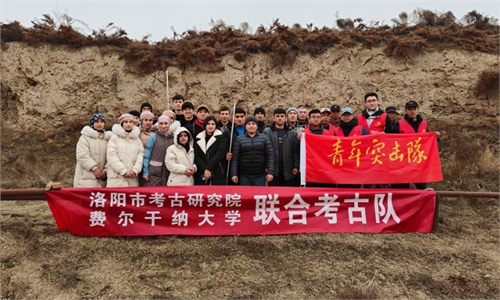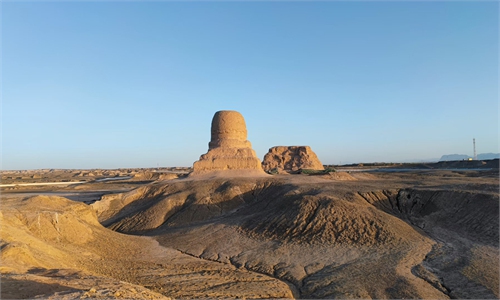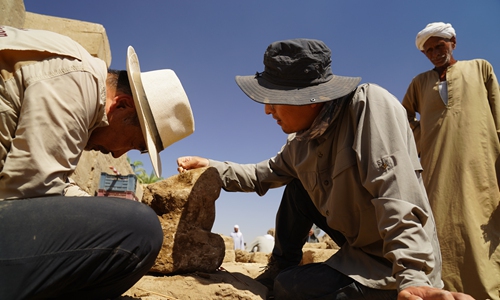ARTS / CULTURE & LEISURE
Chinese-Uzbek archaeological team makes major findings

Photo: CCTV
A joint Chinese-Uzbek archaeological team has made significant discoveries at the Chinar-Tepa site in the upper Surxondaryo river valley, unearthing more than 30 ancient house foundations and a trove of cultural artifacts, state broadcaster CCTV reported on Sunday.
The excavation was led by the Collaborative Research Center for Archaeology of the Silk Roads of Northwest University in China and the Samarkand Institute of Archaeology in Uzbekistan. Covering an area of 350,000 square meters, the site consists of a central residential zone flanked by burial grounds on both sides.
The latest excavation focused on the core residential area, revealing multi-layered housing remains from different periods.
"The findings are critical for establishing a chronological framework of the Kushan Empire [1st to 3rd century], reexamining architectural styles of the era and clarifying key features of Kushan archaeological characteristics," Wang Jianxin, the Chinese side leader of the China-Uzbekistan joint archaeological team and a professor at the Northwest University, told the Global Times on Sunday.
According to Wang, at least six distinct structural layers comprising more than 30 house foundations were found at the site. A wealth of remains, including wall foundations, hearths and postholes, along with a large number of artifacts, such as painted human and animal figurines, ceramic spindle whorls, stone grinding slabs and coins, were also found. "The overlapping foundations show clear stratigraphic relationships, allowing researchers to trace the construction, renovation and abandonment of buildings across different phases," noted Wang.
The current excavation season is nearing completion. The team has reinforced and protected the discovered house foundations and is now working to restore the recovered artifacts. Digital documentation, including 3D modeling, is underway to digitally document the site. They also collect environmental samples, along with the identification of plant and animal remains, aiming at gathering as much comprehensive information from the site as possible, Wang told the Global Times.
Since 2019, the joint team has conducted seven archaeological expeditions in region. They have confirmed the presence of a chain of Kushan-period settlements along the river's eastern bank. Chinar-Tepa is the largest and best-preserved among them, according to Wang.
Wang has started to carry out joint archaeological work along the Silk Road since 2009. For years, Wang's team has been exploring Central Asia and has formed a joint archaeological team with professionals from Uzbekistan. They have made a series of finds, including a batch of settlements of ancient nomadic and agricultural cultures in the western Tianshan Mountains.
In addition to Wang's team, the Chinese Academy of Social Sciences' Central Asian Archaeological Team has been working with the Institute of Archaeology at the Uzbek Academy of Sciences since 2012, focusing on systematic field excavations in the Fergana Valley.
Over more than a decade of research at the Mingtepa site, the team found that about 2,000 years ago, Mingtepa was an important city in the Dayuan state, a state known for the precious Fergana horse breed and key hub on the Silk Road.
In 2025, researchers from Chinese Academy of Social Sciences set up a mobile lab for the better conservation of unearthed relics at the Mingtepa site, including a Han Dynasty (206BC-AD220) coin. The bronze coin, worn as an ornament by the tomb's occupant, stands out as a crucial witness to East-West communication.



